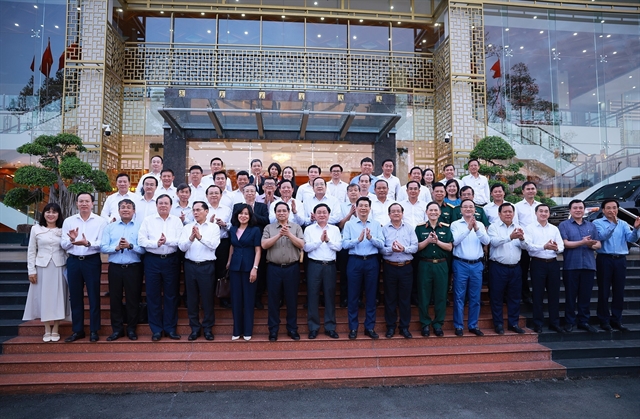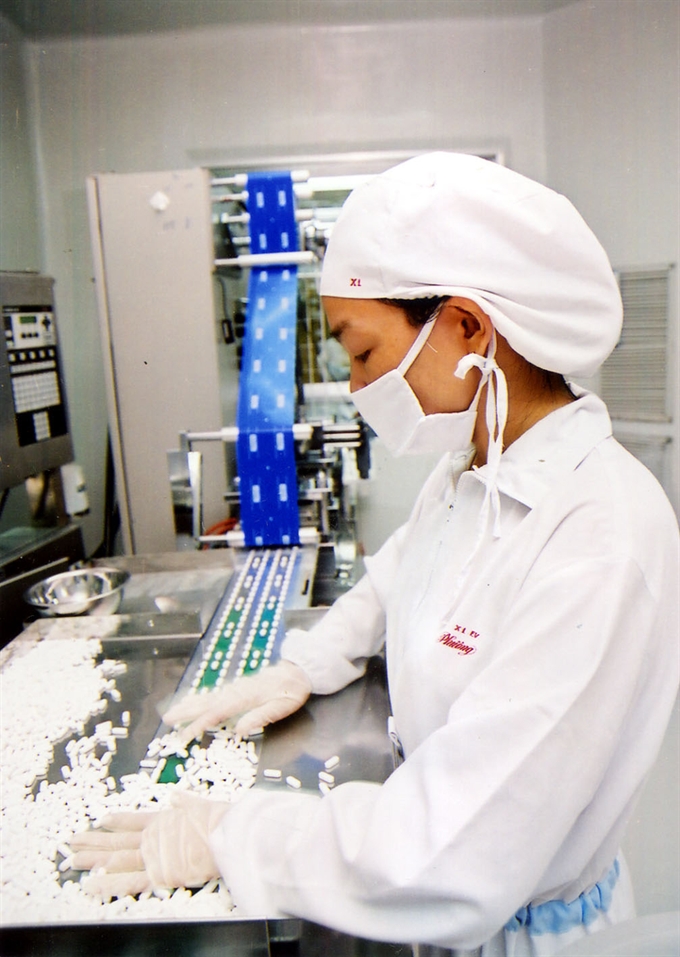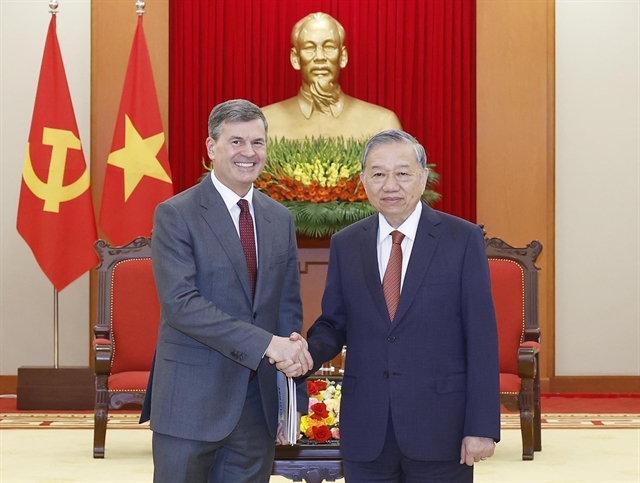 Economy
Economy

The Trans-Pacific Partnership and other free trade agreements that Việt Nam has signed can provide great opportunities for the country if it adopts appropriate business strategies, experts told a seminar yesterday.
 |
| The capsule production line of Hậu Giang Pharmaceutical Company in southern Cần Thơ Province. Firms were urged to adopt appropriate business strategies to exploit opportunities from free trade agreements. - VNA/VNS Photo Huy Hùng |
HCM CITY — The Trans-Pacific Partnership and other free trade agreements that Việt Nam has signed can provide great opportunities for the country if it adopts appropriate business strategies, experts told a seminar yesterday.
Patrick Tay, advisory executive director of consulting firm PwC Malaysia, told around 150 participants at the Economic Integration and Trade Liberalisation – Vision for Việt Nam Businesses seminar held by PwC Vietnam, that firms should follow three strategies – willingness to disrupt; innovation and spending on research and development; and embracing globalisation.
“Attack is the best form of defence and businesses should understand and invest in disruptive technology before being disrupted.”
Those who anticipate are rewarded, he said, urging businesses to build new capacities before existing ones become obsolete.
He made it clear that embracing globalisation includes using technologies from outside to improve products currently made for the domestic market.
He cited the example of Malaysian low-cost carrier AirAsia, saying first it dreamted big and aimed for the best and then went beyond borders.
Miriam Garcia Ferrer, head of the trade and economic section at the Delegation of the European Union to Việt Nam, said businesses have to understand the European market to tap the opportunities offered by the EU-Việt Nam FTA.
She said the EU with its 28 member countries and a population of more than 500 million is a large market for Việt Nam (representing 19 per cent of Việt Nam’s exports last year). To tap this market, Việt Nam’s businesses needed to find out which markets suit their products, know about consumers there, their spending capacity and their requirements, she said.
European customers want high-quality goods and so businesses should add value to their products, she said, suggesting for instance that instead of exporting coffee beans, Việt Nam should add value to its coffee products that make them outstanding and different from others.
Tastes differ from one European market to another, and this would help Việt Nam diversify its products, she said. Since their requirements are demanding, once Vietnamese businesses can sell to that big market, they would also be able to sell to the US and Canada, she said.
Phạm Thị Việt Nga, CEO of Hậu Giang Pharmaceutical Company, spoke about her experience in making preparations for the opportunities and challenges likely to arise from the trade deals.
“We invest in three areas -- technology, equipment and automation; innovation of corporate management; and distribution network management -- since with the TPP and FTAs more foreign pharmaceutical companies will enter this market and they will need distributors.
“We choose co-operation instead of competition.”
She is also focused on strengthening her company’s human resources.
Võ Tấn Thành, deputy chairman of the Việt Nam Chamber of Commerce and Industry, said businesses should take the initiative to learn about the contents and requirements of the TPP and FTAs and work out long-term strategies while building a professional workforce and training a new generation of managers to meet the evolving needs.
He also spoke about the need for Government support in the form of handling issues related to exchange rates, interest rates and loan procedures and institutional reforms, which should focus on creating a legal framework, drafting regulations for trading and import-export and for helping domestic businesses link up with global value chains.
Việt Nam has signed 16 FTAs, including some ambitious ones like the EU–Việt Nam FTA and the TPP, nine of which are already in force.
The TPP opens up a huge market for Vietnamese goods, which, under favourable economic conditions, should add up to US$33.5 billion to Việt Nam’s GDP and $68 billion to its exports by 2025. - VNS




